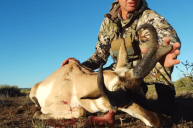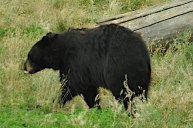The pronghorn antelope is one of the more underrated big game animals of North America. Technically it's not really an antelope, but they are still fascinating creatures to observe in the wild. These beautiful animals and one of the fastest mammals that can be found here in the United States.
In fact, it's not uncommon for one to reach 40-50 miles per hour out in the open high desert environments they call home. These animals are also a real challenge to hunt because of that open habitat. It means there are few places to hide.
This means getting into bow range is often only possible with a good ground blind. And even if you do get into range, these animals spook easy. It's not uncommon for them to jump the string. In this video from nockonarchery, John Dudley gets a close shot on a pronghorn buck that tries to do just that. Watch to see what happens when he finally lets that arrow fly.
Obviously, that higher hit wasn't what John was intending, but it worked!
That pronghorn buck was clearly on edge as he tried to jump the string. Fortunately, John was anticipating the animal doing this and purposely held his pin lower to compensate. The buck ended up jumping more than he anticipated and the shot ends up dropping the buck.
It's hard to tell from this footage, but it looks like it was a spine shot. Not what one sets out to try and do with a bow, but it did work and result in a clean kill in this scenario.
The lesson to take away from this is to use fast archery gear when hunting pronghorns. And to adjust your point of aim for an animal that's acting spooky. Pronghorns can be a challenge to take with archery gear, but it can be done with a little preparation and strategy!
For more outdoor content from Travis Smola, be sure to follow him on Twitter and check out his Geocaching and Outdoors with Travis YouTube channels.




